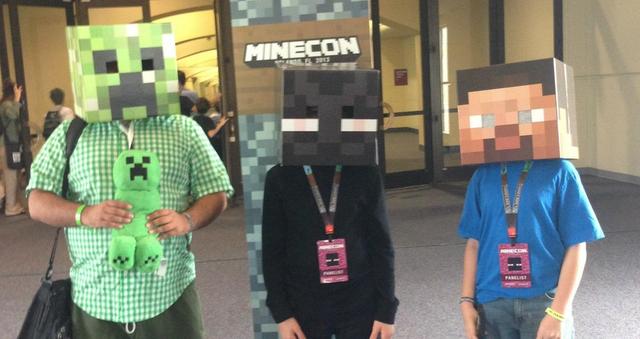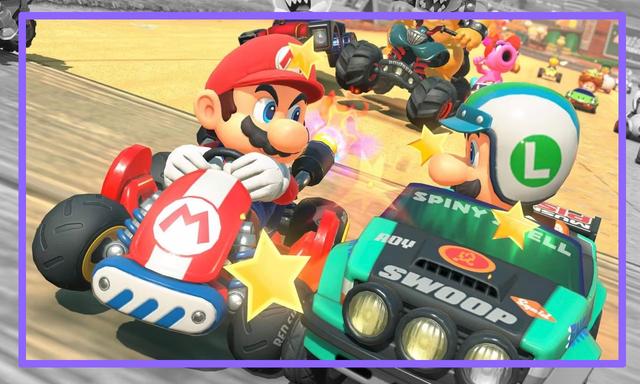If you click on a link and make a purchase we may receive a small commission. Read our editorial policy.
Anatomy of a Vampire’s Lair: Inside the exquisite production design of AMC's Interview with the Vampire
Why Interview with the Vampire has the best production design on TV

Popverse's top stories of the day
- Disney & Lucasfilm are quietly planning a 50th anniversary Star Wars movie that's focused on all-new characters
- MEMBERS ONLY: Follow along live to the Mandalorian & Grogu movie panel from Star Wars Celebration Japan 2025!
- WATCH NOW: The gentleman villain Mads Mikkelsen tells us how he balances being charming and despicable in our favorite movies & TV series
In the season 2 finale of AMC's Interview with the Vampire, healing goes hand-in-hand with redecoration.
After a tumultuous breakup with his abusive partner Armand (Assad Zaman), the vampire Louis (Jacob Anderson) processes his trauma in two ways: He reconnects with his first love Lestat (Sam Reid), and he remodels the penthouse he used to share with Armand. The episode’s final scenes show him surrounded by brightly-colored furniture and art, entering springtime after a long, oppressive emotional winter.
Blending historical romance with psychological horror, Interview with the Vampire is all about sumptuous extremes. Production designer Mara LePere-Schloop creates exquisitely researched locations for storylines in early 20th century New Orleans and 1940s Paris, exploring brothels, townhouses, war-torn villages and (the triumph of season 2) a full Grand Guignol theater. Yet among all this historical detail, the most interesting setpiece is deceptively subtle: Louis and Armand’s penthouse in present-day Dubai, where the titular interview takes place. It’s a masterpiece of emotionally resonant design, rich with symbolism and clever details that sometimes take a season or more to pay off.
This apartment initially suggests a familiar brand of modern wealth, echoing the ominous minimalism of American Psycho or Leigh Whannell’s Invisible Man. As an avowed capitalist, the 145-year-old former pimp Louis has reshaped himself into a 21st century business tycoon. With its boxy black couches and acreage of smooth, empty floors, his living room has all the warmth of an aircraft hangar.
Yet the more time we spend here, the more juicy details we begin to notice. Mara LePere-Schloop has spoken about her desire to disrupt the “generic” minimalism of the super-rich, creating a home that speaks to different facets of Louis and Armand’s shared life.
Hanging on slate-gray walls, their art collection establishes Louis as a curator with expensive and wide-ranging tastes. The dining room features a famous missing Rembrandt (stolen during the Isabella Stewart Gardner museum heist in 1990) alongside a massive charcoal drawing of writhing tree roots by contemporary New Orleans artist Ron Bechet; a nod to Louis’ Louisiana background. Elsewhere you can spot a Basquiat and photos by street photographer Vivian Maier.
Certain rooms are windowless and tomb-like, reflecting the couple’s undead nature and sensitivity to sunlight. Meanwhile the airy corridors and layered archways combine the architecture of ancient Dubai with the confusion of an Escher drawing.
Designed to circulate cool air in a desert climate, this layout creates the illusion that a door to the outside world is hiding just around the corner. In reality, the apartment is encased in a reflective glass exterior, hundreds of feet above street level.
What the penthouse tells us about Louis and Armand
Above all, this home is a monument to Louis and Armand’s complicated relationship. Meeting in postwar Paris, they came together under uniquely toxic circumstances, committing to each other after the death of Louis’ daughter Claudia - which Armand secretly orchestrated. Hired to write Louis’ memoirs, journalist Daniel Molloy (Eric Bogosian) is right to feel suspicious about their romantic facade. The truth is that Armand exerts an insidious control over every aspect of Louis’ life - a dynamic that’s literally built into their home.
After pretending to be human in season 1, Armand reveals his identity by levitating in mid-air, instantly adding a disturbing new dimension to the floating bookshelves in their library. Originally seeming like an aesthetic quirk, we now see this as a cue that Armand controls the flow of information in their household. Louis can’t fly, so he must rely on his lover to retrieve books from their collection.
Likewise the wraparound windows in their living room gain a lethal subtext once we understand the power imbalance between Armand (who is strong enough to walk through sunlight) and Louis (who isn’t). Louis once tried to kill himself by stepping into the sun, and he now spends every day behind a remote-controlled layer of UV shielding.
Elsewhere, the show hints at a sadomasochistic undercurrent to their relationship. Armand likes to be dominated; a desire with a dark psychosexual background in his pre-vampiric childhood as a sex trafficking victim. In season 1 he seemed to enjoy play-acting as a human servant. Yet he is the one with the most power here; a control freak who positions himself as a caretaker, superficially catering to Louis’ tastes while keeping him locked away in a tower.
The mere existence of their dining room is an affectation installed for Louis’ benefit. Most vampires drink straight from the vein, but Louis has a longterm eating disorder, drinking small portions of human blood interspersed with animal prey and human food - something that tastes disgusting and has no nutritional value to vampires, but he persists in eating anyway.
Left to his own devices, Armand probably wouldn’t choose to live in a Dubai skyscraper. But Louis is a lifelong businessman, and in his own perverse way, Armand wants to keep him happy. He’s spent decades helping to accumulate wealth and create this luxury prison of a household. It’s a far cry from the lived-in clutter of the townhouse Louis shared with Lestat in 1920s New Orleans.
A mausoleum for a bedroom
In a show obsessed with theater and artifice, the interview is a performance in itself, and the penthouse is Louis and Armand’s stage. We’re invited to wonder what image they’re intentionally presenting to Daniel Molloy, and what elements they choose to keep private.
The juiciest answers lie in the bedroom, a space with sunset lighting and prison-like bars surrounding the bed, coupled with possible allusions to Mughal tomb architecture. (Originally named Arun, Armand was born in 16th century Delhi, during the Mughal Empire.)
In Anne Rice’s lore, vampires must sleep in coffins during the day - or at the very least, buried in an enclosed space like this windowless mausoleum. Behind-the-scenes photos reveal a recurring motif of bronze suns, a collection of urn-like pottery, and several whips hanging above a mysterious bowl, hinting at what Armand and Louis get up to in private. On a perversely pointed note, their bedroom also displays a painting titled The Kiss of Judas, alluding to the betrayal that kickstarted their relationship.
Buried alive
The apartment’s most alarming detail is only revealed at the end of season 2, disrupting our image of the library as a place of emotional decompression.
As the lightest part of the penthouse, this room doubles as an indoor courtyard where Louis can enjoy a controlled taste of freedom. A magnolia tree grows in a zen garden of pale gravel, where he takes off his shoes to feel the ground beneath his feet.
This garden echoes the staging for Samuel Beckett’s play Waiting for Godot, and the tree itself is a romantic keepsake from their courtship in Paris. But when we learn more about their relationship’s backstory, the garden gains a more violent subtext.
Claudia’s death is the defining trauma of Louis’ life, executed by Armand’s coven in the 1940s. At the time Louis was trapped in a coffin full of white gravel, unable to intervene. Seven decades later he still has splinters of that gravel embedded in his legs, and he chose to decorate his meditation garden with the same stone. Every visit reminds him of the worst day of his life. But when Armand leaves, he finally makes some changes, redecorating the room with a painting of his brother Paul, and a replica of Claudia’s favorite dress.
When revelation enters the room
Louis’ cathartic renovation project is foreshadowed for several episodes, as he and Armand sell off their most prominent painting: A terrifically unnerving Francis Bacon triptych. Leaving the wall empty, Louis announces that he’ll “wait for revelation to enter the room” before deciding what to hang in its place. Without consciously knowing that they’re going to break up, he’s ready to start making decisions alone.
Revelation arrives in a very literal sense when Daniel uncovers Armand’s web of lies, and Louis responds by throwing Armand at the empty wall, cracking the plaster. Later he replaces the triptych with a contemporary painting by a lesser-known artist, Peter Macon. It’s a blue and gold portrait of parental love, complimenting the yellow accents of the apartment’s bold new color scheme; itself a reference to Claudia.
This may well be our last sight of the penthouse. Season 3 will shift focus to Lestat’s burgeoning career as a rock star, suggesting a drastically different aesthetic of trashy glamor and eclectic mess. Anything else is pure speculation, but fans have been given ample reason to trust whatever this creative team comes up with next.
Want to know what's coming up next in pop culture? Check out Popverse's guides to:
Follow Popverse for upcoming event coverage and news
Find out how we conduct our review by reading our review policy
Let Popverse be your tour guide through the wilderness of pop culture
Sign in and let us help you find your new favorite thing.
















Comments
Want to join the discussion? Please activate your account first.
Visit Reedpop ID if you need to resend the confirmation email.